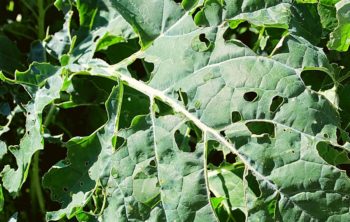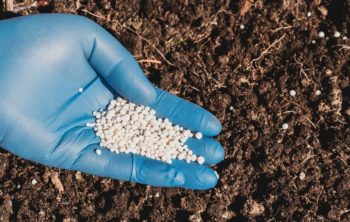Learning the key steps of how to mix neem oil for plant use is a huge advantage in allowing nature to cure its own problems.
Neem Tree is one of the plants that show great versatility in combating plant pests. In India, it’s country of origin, has a sacred tree status. This is due to its beneficial ingredients in traditional Ayurvedic medicine.
Neem oil is a prized ingredient used in traditional and modern remedies. The insecticide properties of Neem oil make it a natural supporter of the garden. Simply summed up, neem oil is nature’s gift from plants to plants!
How to Mix Neem Oil for Plants
To make full use of neem Oil, it is vital to learn how to mix it for your plants. When making your own neem insect repellent spray you are free to adjust the concentration. This depends on the purpose and situation. There are no hard rules set in stone for this, only friendly guidelines.
Neem Oil Mixture for Insect Repellent Spray
To make 1 liter or 1 quart of 0.5% dilution of neem plant spray you need:
- 1 – 2 ml or 1/3 tsp of non-toxic insecticidal soap or another non-toxic detergent
- 1 liter or 1 quart of warm water
- 5 ml or 1 tsp Neem oil – use pure or cold-pressed oil
If you want to make a bigger batch, multiply these quantities by the number of liters you want to increase.
If you need a more concentrated repellent spray, multiply both Neem oil and the amount of non-toxic soap used.
To Make 20 liters or 4 gallons of a 1% Solution of neem Garden Spray you Need:
- 200 ml or 6.5 oz neem oil
- 20 liters or 4 gallons of water
- 30 ml or 5 tbsps of insecticidal soap
If you have trouble trying to dissolve the oil, use more detergent.

Important Points to Note when Mixing Neem Oil Spray:
- Use pure, high-quality, organic cold-pressed oil
- Use warm water if possible
- If making a large batch, first premix the ingredients in a small amount of water. Then pour into a big container with the rest of the water and mix well.
- Always mix warm water with soap first
- Slowly add the oil while stirring vigorously
- Fill the mixture in your sprayer
- Keep shaking the mixture while spraying
- This mixture should be used within 8 hours after mixing
How to Apply Neem Oil Mixture on Plants
1. Spray this solution only on the leaves. Pests hide on the underside of the leaf, so drench the leaf with the spray. Neem is also good for the
2. Always exercise caution when spraying this solution. Before applying it generously, test it on a small area first and watch for adverse effects for a day. If the plant does not get a negative reaction in 24 hours, go ahead and spray the entire area.
3. Do not spray neem oil when the weather is either too hot or cold.
4. Use Neem oil spray as often as your plants need it. Once per week is a good measure and spraying it often will work as a preventative measure.

How Do You Apply Neem Oil to Cucumber Plants?
Neem oil is an excellent insect repellent that works amazingly on cucumbers and other plants from the same family as cucumbers. It is used to deter insects such as cucumber beetles, aphids, and zucchini bug infestation.
The best way to apply neem oil to cucumber plants is to make a mix of water, dish soap, and neem oil and mix evenly. Add neem oil at a ratio of 2-3 tablespoons per gallon of water. This will create a soapy solution that you will then spray onto parts of your cucumber plant. You can spray this mix on both the top and bottom parts of the leaves.
For the best results, repeat the application every 1-10 days until you see signs that the mixture is working.
How Do You Apply Neem Oil to a Jade Plant?
Neem oil application is one of the best and most popular ways to get rid of spider mites on a jade plant. This common and non-toxic product is recommended by almost every experienced gardener.
These are the steps that you should follow if you are going to use neem oil on a jade plant:
- add 1 and a half teaspoons of neem oil and 1 teaspoon of liquid dish soap to 1 liter of slightly warm water. Mix this mixture well well to make sure that the oil is evenly dissolved.
- Before applying this mixture to the entire plant, first, test it on a small section of a leaf to see if it does not been it. Once you have ascertained that it causes no damage, you can go ahead and spray the entire plant.
- Spray the jade plant with the neem oil mixture. Make sure that you get to all the crevices on the top and bottom of the leaves, and ensure they are all evenly coated.
- Repeat this process every week until all the pests are no longer visible and you are satisfied with the results.
Which Brand Of Neem Oil is Best For Plants?
There are different brands of neem on the market. It is therefore important to know which brands are legit and which are not. One way to go about this is to look for reviews given by other people on the products before you purchase them, especially if you buy the products online. Another way is trial and error. This is unfortunate, but if you cannot know from the experiences of others, you will have to find out on your own. Here we give you a bit of help by providing you with a list of the best 5 neem oil brands that are reliable and work well for plants;
- Neem oil ready-to-use fungicide from Safer
- Harris Brand cold-pressed neem oil
- Ready to use neem oil from Bonide
- Neem Organics neem oil
- Cold-pressed neem oil from Plantonix
Remember that regardless of the brand of neem oil you for your plants, it works best if diluted. Full-strength neem oil may damage your plant leaves especially if the plants are young or stressed. Even though this is a natural oil, be careful when using it.
How Do You Dilute Neem Oil For Indoor Plants?
The way to dilute neem oil for indoor plants is as follows:
- Mix 1 and a half teaspoons of concentrated neem oil of your choice with 1 teaspoon of liquid dish soap and 1 liter of water
- Put this mixture in a spray bottle and mix it well
- Test the mixture on a small portion of a plant leaf before spraying it on an entire plant to make sure that it does not damage the plant.
How Often to Water Plants With Neem Oil?
So how often should you water plants that have been treated with neem oil? Well, the plants being treated will need to be watered as needed. Water them a bit more regularly if they have a severe infestation.
Which Indoor Plants Don’t Like Neem Oil?
Neem oil must not be used on herbs such as basil, caraway, cilantro, dill, marjoram, oregano, parsley, or thyme. These herbs have fine, delicate leaves which may burn and get damaged. Treating plants such as arugula, lettuce, peas, and spinach should do with care as they are also susceptible to burn.
What Plants Can Be Sprayed With Neem Oil?
Neem oil is safe to use on most plants. These include potatoes, cucumbers, and most house plants that are used for decoration.
Conclusion
Whoever thought that plants can be medicine to their fellow plants? We all thought plants are food and medicine for humans. Shock is, nature can heal nature! All our complicated knowledge is challenged by simple nature!
FAQs
Is applying neem oil worthwhile when it comes to plants?
Yes. Neem oil is a natural plant extract that has been used by Ayurvedic practitioners for thousands of years. It is one of the most powerful insecticides available, and can help control a wide range of pests. Neem oil can be used topically or in soil or foliar sprays.
What is it made of? Neem oil is a mixture of more than 30 different compounds called azadirachtins. These are all derived from the neem tree (Azadirachta indica), which is native to India, Pakistan and Bangladesh. The most potent of these compounds is azadirachtin A. Other azadirachtins have varying levels of potency. The neem tree produces a milky white sap when cut. This is the source of neem oil. The sap is dried and pressed into oil.
How do you apply neem oil on plants?
You can apply it with a sprayer, but for best results, I prefer the liquid form. You just mist the plants regularly, and as needed. I use this method on my roses, citrus, and potted plants. I usually spray in the morning, before I water. This way the neem is diluted with rainwater and doesn't splash around too much when I water.
I have used neem oil as a foliar spray. I also had good results when I sprayed it onto the roots of my tomato plants. My experience has been that neem oil is best used on young seedlings or plants that have just germinated.
How much neem oil do I mix with water for plants?
Neem oil can be mixed with water, but how much you use depends on the amount of plant disease and insect problems you are trying to solve. For example, you may find that using a one-to-one dilution works well for your problem. However, if you are having an especially bad infestation of ants, you may need to make a stronger mixture.
The following ratios have been used successfully in our garden:
•1 gallon of neem oil to 1 gallon of water = 1 part neem oil to 9 parts water
•1 gallon of neem oil to 1 gallon of water = 10 parts neem oil to 90 parts water
•1 gallon of neem oil to 1 gallon of water = 100 parts neem oil to 100 parts water
When mixing neem oil, the more concentrated the mixture, the better it will be at killing bugs and keeping them away. If you are mixing up a small quantity of neem oil, I recommend using a funnel. However, if you are mixing up a large quantity, it is best to use a sprayer.
Where can I find neem oil?
You can buy neem oil in the health food section of the grocery store. You can also order it online.

Brian is an avid gardener who loves spending time outdoors. He is passionate about using his green thumb to create beautiful, lush gardens for her friends and family. He finds joy in tending to her garden, trimming plants, and cultivating new species. He enjoys to share his knowledge and experience with others with a similar gardening enthusiasm. Brian is a true nature enthusiast and a has true passion for the outdoors.




